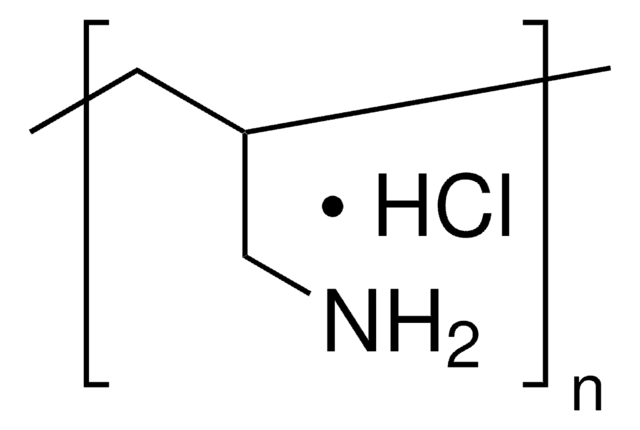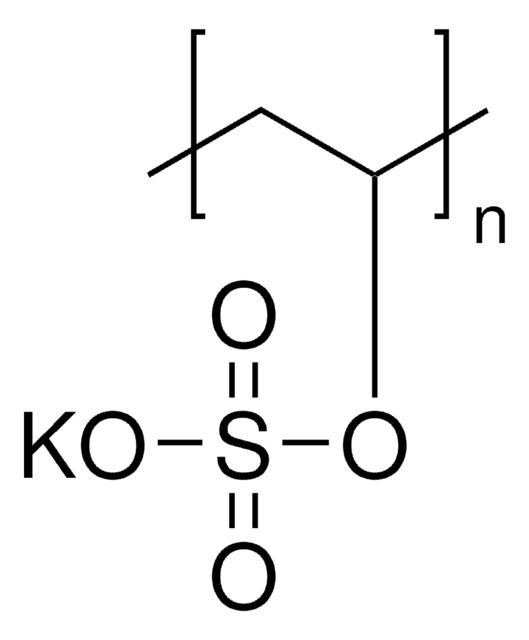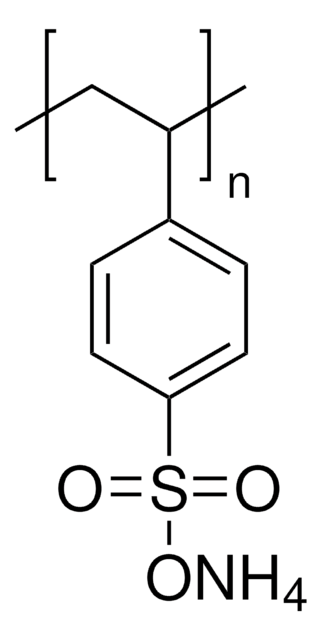409022
Poly(diallyldimethylammoniumchlorid) -Lösung
average Mw 200,000-350,000 (medium molecular weight), 20 wt. % in H2O
Synonym(e):
PDADMAC
About This Item
Empfohlene Produkte
Form
viscous liquid
Qualitätsniveau
Mol-Gew.
average Mw 200,000-350,000 (medium molecular weight)
Konzentration
20 wt. % in H2O
Brechungsindex
n20/D 1.375
Viskosität
250-500 cP(25 °C, Brookfield)
Dichte
1.04 g/mL at 25 °C
InChI
1S/C8H16N.ClH/c1-5-7-9(3,4)8-6-2;/h5-6H,1-2,7-8H2,3-4H3;1H/q+1;/p-1
InChIKey
GQOKIYDTHHZSCJ-UHFFFAOYSA-M
Suchen Sie nach ähnlichen Produkten? Aufrufen Leitfaden zum Produktvergleich
Verwandte Kategorien
Allgemeine Beschreibung
Anwendung
Lagerklassenschlüssel
10 - Combustible liquids
WGK
WGK 1
Flammpunkt (°F)
Not applicable
Flammpunkt (°C)
Not applicable
Persönliche Schutzausrüstung
Eyeshields, Gloves, multi-purpose combination respirator cartridge (US)
Analysenzertifikate (COA)
Suchen Sie nach Analysenzertifikate (COA), indem Sie die Lot-/Chargennummer des Produkts eingeben. Lot- und Chargennummern sind auf dem Produktetikett hinter den Wörtern ‘Lot’ oder ‘Batch’ (Lot oder Charge) zu finden.
Besitzen Sie dieses Produkt bereits?
In der Dokumentenbibliothek finden Sie die Dokumentation zu den Produkten, die Sie kürzlich erworben haben.
Kunden haben sich ebenfalls angesehen
Artikel
We present an article that discusses two applications in particular; first, using these layers as polyelectrolyte membranes to control permeability.
Unser Team von Wissenschaftlern verfügt über Erfahrung in allen Forschungsbereichen einschließlich Life Science, Materialwissenschaften, chemischer Synthese, Chromatographie, Analytik und vielen mehr..
Setzen Sie sich mit dem technischen Dienst in Verbindung.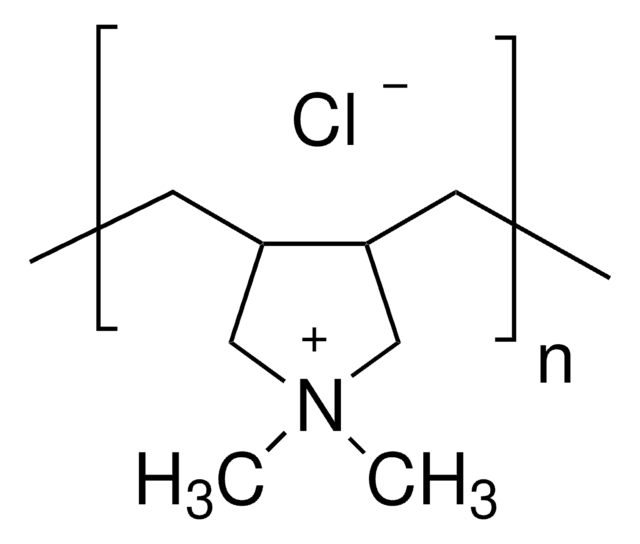
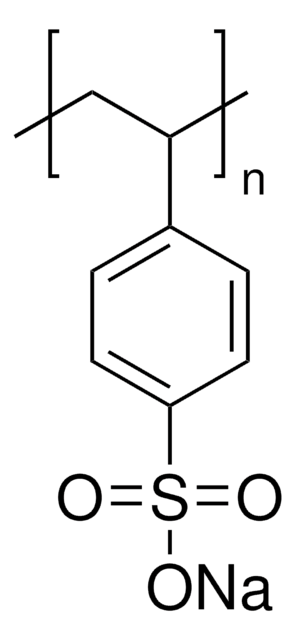
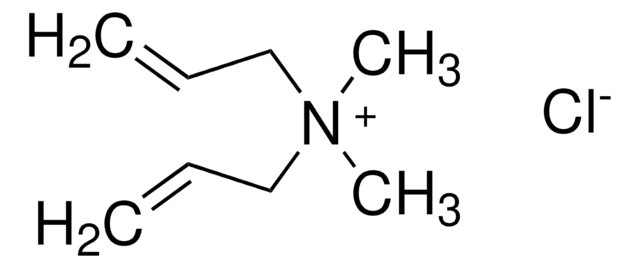
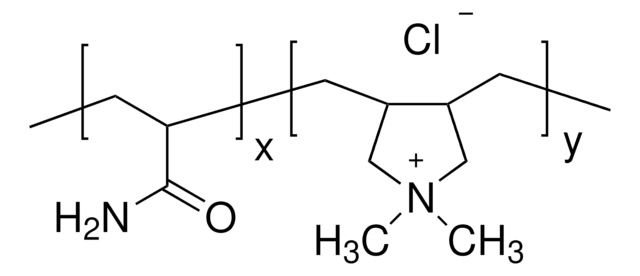
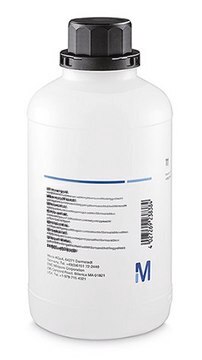
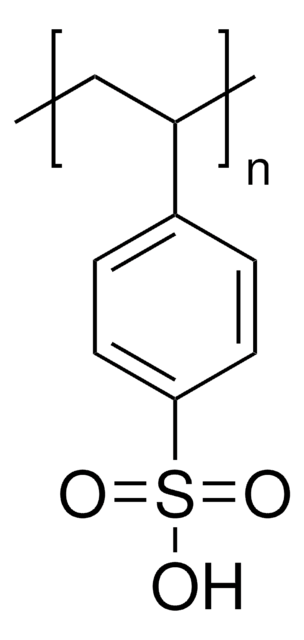
![Poly[bis(2-chlorethyl)ether-alt-1,3-bis[3-(dimethylamino)propyl]harnstoff], quaternisiert -Lösung 62 wt. % in H2O](/deepweb/assets/sigmaaldrich/product/structures/139/843/f0b4a2ac-de44-4fb5-ab36-a700daaf8aa5/640/f0b4a2ac-de44-4fb5-ab36-a700daaf8aa5.png)
